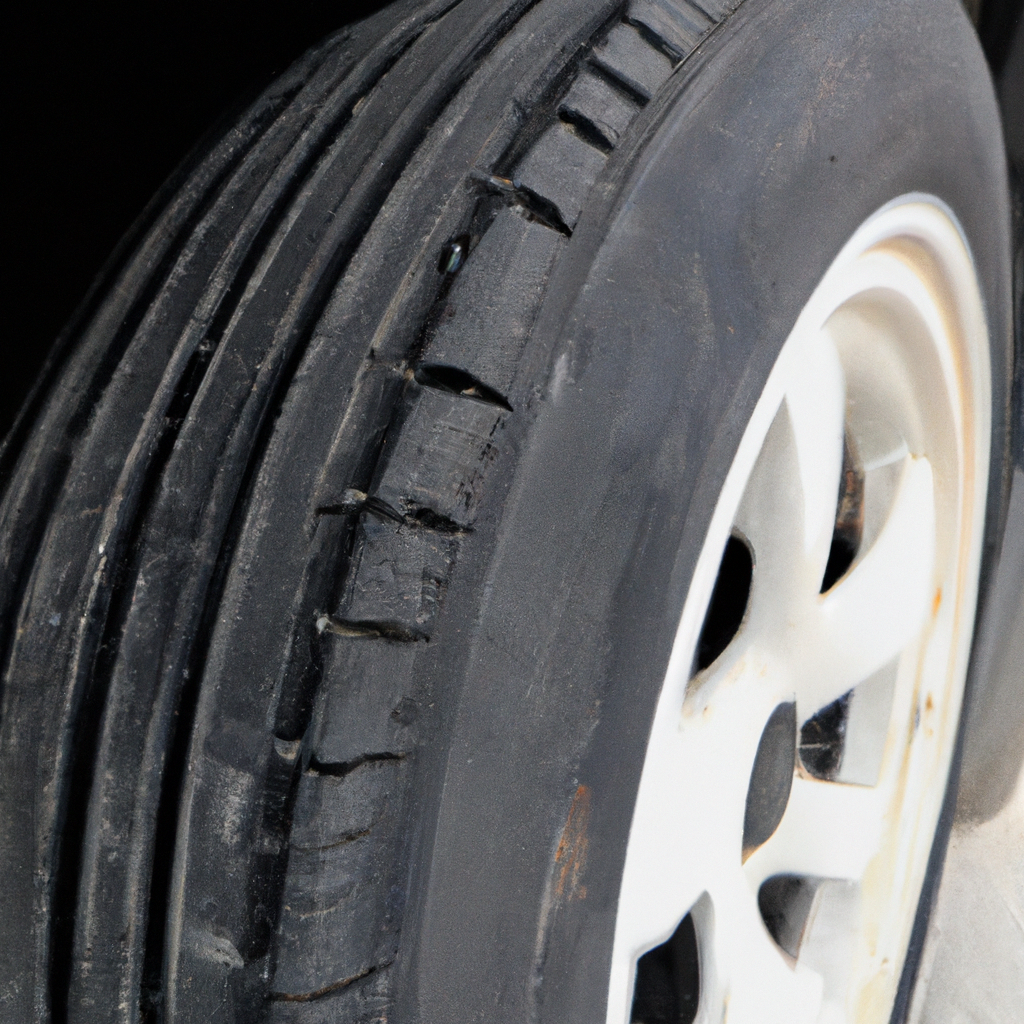If you’ve been considering upgrading your vehicle’s wheels to aftermarket ones, you may be wondering if it’s possible to install run-flat tires on them. Well, the good news is that you can! Run-flat tires provide added peace of mind on the road by allowing you to continue driving even if you have a flat tire. And with aftermarket wheels, you can customize the look of your car while still benefiting from the safety feature of run-flat tires. So, let’s explore why combining run-flat tires with aftermarket wheels is a great option for both style and functionality.
Factors to Consider
Wheel Size and Fitment
Before considering installing run-flat tires on your vehicle, it is important to ensure that the wheel size and fitment are compatible with these types of tires. Run-flat tires are designed to offer continued mobility even in the event of a puncture or loss of air pressure, but they may require specific wheel sizes for proper installation. It is essential to consult your vehicle’s manual or seek professional advice to determine if your aftermarket wheels are suitable for run-flat tires.
Load Rating and Tire Size
Another factor to consider when contemplating the installation of run-flat tires is the load rating and tire size. Run-flat tires generally have a higher load rating compared to regular tires, which means they can support heavier loads. It is crucial to ensure that the load rating of the run-flat tire matches or exceeds the requirements of your vehicle. Additionally, verifying that the tire size is appropriate for your vehicle’s specifications is essential for optimal performance and safety.
Sidewall Stiffness
Sidewall stiffness is an important factor to consider when evaluating the compatibility of run-flat tires with your aftermarket wheels. Run-flat tires typically have stiffer sidewalls compared to regular tires, which contributes to their ability to support the weight of the vehicle even in the absence of air pressure. However, it is crucial to ensure that the sidewall stiffness of the run-flat tires is compatible with your aftermarket wheels to prevent any potential issues with fitment and performance.
Suspension and Clearance
The suspension system of your vehicle plays a significant role in determining the compatibility of run-flat tires with your aftermarket wheels. Run-flat tires can have different characteristics that may impact the overall performance and ride quality of your vehicle. It is essential to consider your vehicle’s suspension system and how well it can accommodate the specific characteristics of run-flat tires. Additionally, clearance is another important aspect to examine, as run-flat tires may require more space due to their construction. Ensuring that there is sufficient clearance in the wheel wells is crucial to avoid any interference or rubbing between the tires and suspension components.
Advantages of Run-Flat Tires
Continued Mobility
One of the key advantages of run-flat tires is their ability to allow you to continue driving even in the event of a puncture or loss of air pressure. These tires are designed with reinforced sidewalls that can support the weight of the vehicle, providing you with the ability to drive for a limited distance to reach a safe location or a tire repair facility. This feature can offer peace of mind and convenience, especially in situations where a spare tire may not be readily available or accessible.
Safety Benefits
Run-flat tires also offer several safety benefits. In the event of a puncture, the reinforced sidewalls of these tires help maintain the stability and handling of the vehicle. This ensures that you can maintain control and maneuverability, reducing the risk of accidents or loss of control due to sudden tire failure. Additionally, run-flat tires can minimize the need to change a tire in potentially hazardous situations, such as on busy highways or in inclement weather conditions.
Reduced Weight and Space
Traditional spare tires can be heavy and take up valuable space in the trunk or cargo area of your vehicle. Run-flat tires eliminate the need for a spare tire, reducing the overall weight of your vehicle and creating more storage space. This can be particularly beneficial for vehicles with limited trunk space or those that prioritize weight savings, such as sports cars. The reduced weight can also have a positive impact on fuel efficiency and overall vehicle performance.
Convenience
The convenience of run-flat tires cannot be understated. With these tires, there is no longer a need to stop and change a punctured tire or wait for roadside assistance. You can simply continue driving to a safe location or tire repair facility, saving you time and potential inconvenience. Moreover, the elimination of a spare tire means that you don’t have to worry about maintaining and periodically replacing a spare tire, providing an added level of convenience and peace of mind.

Compatibility Issues
Compatibility with Aftermarket Wheels
One potential issue to consider when installing run-flat tires is their compatibility with aftermarket wheels. Aftermarket wheels can have varying specifications and designs, which may not always be suitable for the installation of run-flat tires. It is essential to ensure that the construction and dimensions of the aftermarket wheels are compatible with the specific requirements of run-flat tires. Seeking professional advice or consulting with the tire manufacturer can help determine if your aftermarket wheels are suitable for run-flat tire installation.
Clearance and Fitment
Clearance and fitment are critical considerations when installing run-flat tires. These tires may require more space in the wheel wells due to their reinforced sidewalls and overall construction. It is important to check if there is sufficient clearance between the tires and the suspension components, as inadequate clearance can lead to rubbing or interference that may affect the performance or safety of the tires. Ensuring proper fitment of the tires on your aftermarket wheels is crucial to avoid any issues related to tire installation.
Potential Interference with Suspension
The compatibility of run-flat tires with the suspension system of your vehicle is also a factor to consider. Run-flat tires can have different characteristics compared to regular tires, such as increased sidewall stiffness. These characteristics may impact the performance and ride quality of your vehicle if the suspension system is not designed to accommodate them. It is recommended to consult with professionals or the vehicle manufacturer to ensure that the suspension system can properly handle the specific characteristics of run-flat tires.
Load Capacity and Weight Distribution
Run-flat tires typically have a higher load rating compared to regular tires, allowing them to support heavier loads. When considering the installation of run-flat tires, it is crucial to ensure that the load capacity of the tires matches or exceeds the requirements of your vehicle. Inadequate load capacity can result in compromised performance, reduced safety, and potential tire failure. Additionally, proper weight distribution plays a vital role in the overall handling and stability of your vehicle. Consulting the tire manufacturer or seeking professional advice can help determine the appropriate load capacity and weight distribution for your specific vehicle and use case.
Manufacturer Recommendations
Check with Tire Manufacturer
To ensure the compatibility and proper installation of run-flat tires, it is highly recommended to check with the tire manufacturer. Tire manufacturers have extensive knowledge and expertise regarding their products and can provide specific recommendations and guidelines for your vehicle. They can assist in determining the suitable run-flat tire options for your aftermarket wheels and address any compatibility concerns you may have.
Vehicle Manufacturer’s Specifications
Consulting your vehicle’s manual or the manufacturer’s specifications is another important step in determining the compatibility of run-flat tires. The vehicle manufacturer can provide detailed information about the recommended tire sizes, load ratings, and other specifications that are compatible with your vehicle. Following the vehicle manufacturer’s specifications helps ensure optimal performance, safety, and longevity of your tires.
Seek Professional Advice
When in doubt, seeking professional advice from tire experts or automotive professionals is always a good course of action. These individuals have the knowledge and experience to assess your specific vehicle and aftermarket wheel combination, provide guidance on run-flat tire compatibility, and address any concerns or questions you may have. Their expertise can help ensure that you make an informed decision and install the most suitable run-flat tires for your vehicle.

Installation Considerations
Proper Mounting and Balancing
When installing run-flat tires, it is crucial to ensure that they are mounted and balanced properly. Improper mounting and balancing can result in vibrations, uneven tread wear, and compromised performance. It is recommended to have your tires professionally installed by trained technicians who have the necessary equipment and expertise in handling run-flat tires. This will help ensure that the tires are mounted and balanced correctly, optimizing their performance and longevity.
TPMS (Tire Pressure Monitoring System)
Tire Pressure Monitoring Systems (TPMS) are essential for monitoring the air pressure in your tires. Many vehicles are equipped with TPMS, which provides real-time information about the tire pressure levels. Run-flat tires may have specific requirements for TPMS compatibility, and it is important to ensure that your TPMS is compatible with the run-flat tires you plan to install. Consulting with professionals or referring to the tire and vehicle manufacturer’s guidelines can help ensure that your TPMS is properly integrated with your run-flat tires.
Torque Specifications and Handling
Proper torque specifications are vital when installing run-flat tires. Ensuring that the lug nuts or bolts are tightened to the correct torque specifications helps maintain the integrity and safety of the tire installation. Additionally, it is important to handle run-flat tires with care and avoid any rough or aggressive handling that could potentially damage the tires. Following the tire manufacturer’s guidelines and seeking professional assistance in tightening lug nuts or bolts can help prevent any issues related to improper torque or handling.
Proper Alignment
Alignment plays a crucial role in optimizing the performance and longevity of your tires. Proper alignment ensures that the tires make consistent contact with the road surface, maximizing traction, and reducing uneven tread wear. When installing run-flat tires, it is recommended to have a professional alignment performed to ensure that all four wheels are properly aligned. This will help maximize the benefits of the run-flat tires and ensure optimal handling and stability.
Maintenance and Care
Regular Inspections
Regular inspections of your run-flat tires are essential for maintaining their performance, safety, and longevity. Visual inspections can help identify any signs of damage, such as cuts, bulges, or punctures, that may compromise the integrity of the tire. Additionally, checking the tire tread depth and wear patterns can help identify any irregularities that may require attention. It is recommended to inspect your run-flat tires regularly and address any issues promptly to ensure optimal performance and safety.
Proper Inflation and Pressure
Maintaining proper tire inflation and pressure is crucial for the performance and safety of your run-flat tires. Underinflated or overinflated tires can negatively impact handling, fuel efficiency, and tire life. It is important to check the tire pressure regularly using a reliable pressure gauge and ensure that it matches the recommended pressure specified by the tire manufacturer and the vehicle manufacturer. Proper inflation and pressure levels will help maximize the benefits and lifespan of your run-flat tires.
Rotation and Replacement
Regular tire rotation is important for achieving even tread wear and extending the lifespan of your run-flat tires. The specific rotation pattern and frequency may vary depending on your vehicle and tire manufacturer’s recommendations. Consulting the tire manufacturer or seeking professional advice can help determine the optimal rotation schedule for your run-flat tires. Additionally, it is important to replace your run-flat tires when they reach the recommended tread depth or if they show signs of damage, such as cuts or sidewall bulges. Proper rotation and timely replacement will help ensure that your run-flat tires continue to perform at their best.
Avoiding Potholes and Impact Damage
While run-flat tires offer continued mobility in the event of a puncture, they are not immune to damage caused by potholes or impact with road hazards. It is important to exercise caution and try to avoid potholes or other road debris, as they can potentially damage the tires’ sidewalls or result in other issues. Maintaining a safe driving distance and adhering to recommended speed limits is also important for preventing impact damage. Being mindful of the road conditions and following safe driving practices will help minimize the risk of damage to your run-flat tires.

Run-Flat Tires vs. Regular Tires
Advantages of Regular Tires
While run-flat tires offer several advantages, regular tires also have their own benefits. Regular tires are generally more affordable and widely available compared to run-flat tires. In the event of a flat tire, regular tires can be easily repaired or replaced, often at a lower cost. Additionally, regular tires generally provide a smoother and more comfortable ride due to their softer sidewalls. If the convenience of continued mobility provided by run-flat tires is not a top priority, regular tires may be a more practical option for some drivers.
Disadvantages of Run-Flat Tires
Despite their advantages, run-flat tires also have some drawbacks. The stiffer sidewalls of run-flat tires can result in a harsher ride compared to regular tires, as they provide less cushioning from road imperfections. Additionally, run-flat tires are generally more expensive to purchase and replace compared to regular tires. The limited mileage and speed capabilities of run-flat tires in emergency situations may also be a disadvantage for some drivers. It is important to consider these factors and evaluate your specific needs and priorities before deciding between run-flat tires and regular tires.
Cost and Availability
It is important to note that run-flat tires can be more expensive than regular tires. The specialized construction and added technology of run-flat tires contribute to their higher cost. Additionally, run-flat tires may not be as readily available as regular tires in certain areas or for certain vehicle models. This could potentially result in longer wait times or limited options when it comes to purchasing or replacing run-flat tires. Considering the potential cost and availability factors is crucial when deciding whether run-flat tires are the right choice for your vehicle.
Warranty and Liability
Manufacturer’s Warranty
When purchasing run-flat tires, it is important to review and understand the manufacturer’s warranty. The warranty provides coverage for defects in materials or workmanship, and the specific terms and duration may vary among tire manufacturers. Being aware of the warranty coverage and any exclusions will help you make an informed decision and address any issues that may arise during the warranty period.
Dealer and Installer Liability
When installing run-flat tires, it is important to choose a reputable dealer or installer that is knowledgeable and experienced in handling these specialized tires. Proper installation is crucial for ensuring optimal performance and safety. In the event of any issues or concerns related to the installation, the dealer or installer may assume liability and should be able to address and resolve them in a timely manner. It is recommended to choose a dealer or installer with a good reputation and a track record of providing quality services.
Proper Tire Insurance
Considering tire insurance or road hazard protection can provide added peace of mind when installing run-flat tires. These insurance options typically cover damage to the tires due to road hazards, such as potholes or debris, and can help offset the cost of repairs or replacements. Reviewing the terms and coverage of any tire insurance or road hazard protection plans can help you determine if it is a worthwhile investment for your specific needs.

Conclusion
Installing run-flat tires on vehicles with aftermarket wheels requires careful consideration of several factors. Wheel size and fitment, load rating, sidewall stiffness, and suspension compatibility are all important aspects to evaluate. Checking with tire and vehicle manufacturers, seeking professional advice, and following proper installation procedures are crucial steps to ensure compatibility and maximize the benefits of run-flat tires. Regular maintenance, proper inflation, and careful driving habits will help prolong the lifespan and performance of run-flat tires. Understanding the advantages, disadvantages, and warranty/liability considerations of run-flat tires versus regular tires will help you make an informed decision based on your specific needs, preferences, and budget.

